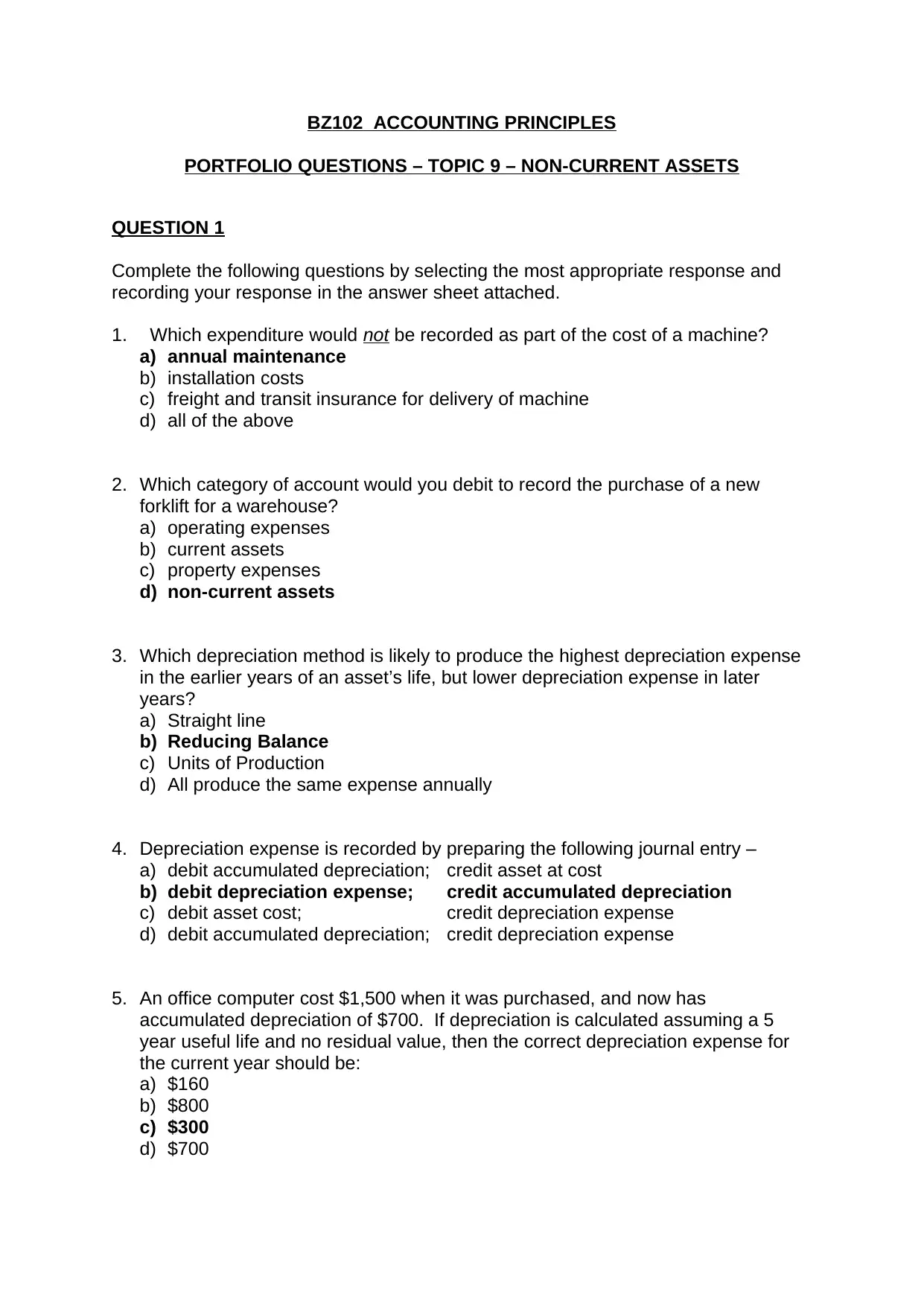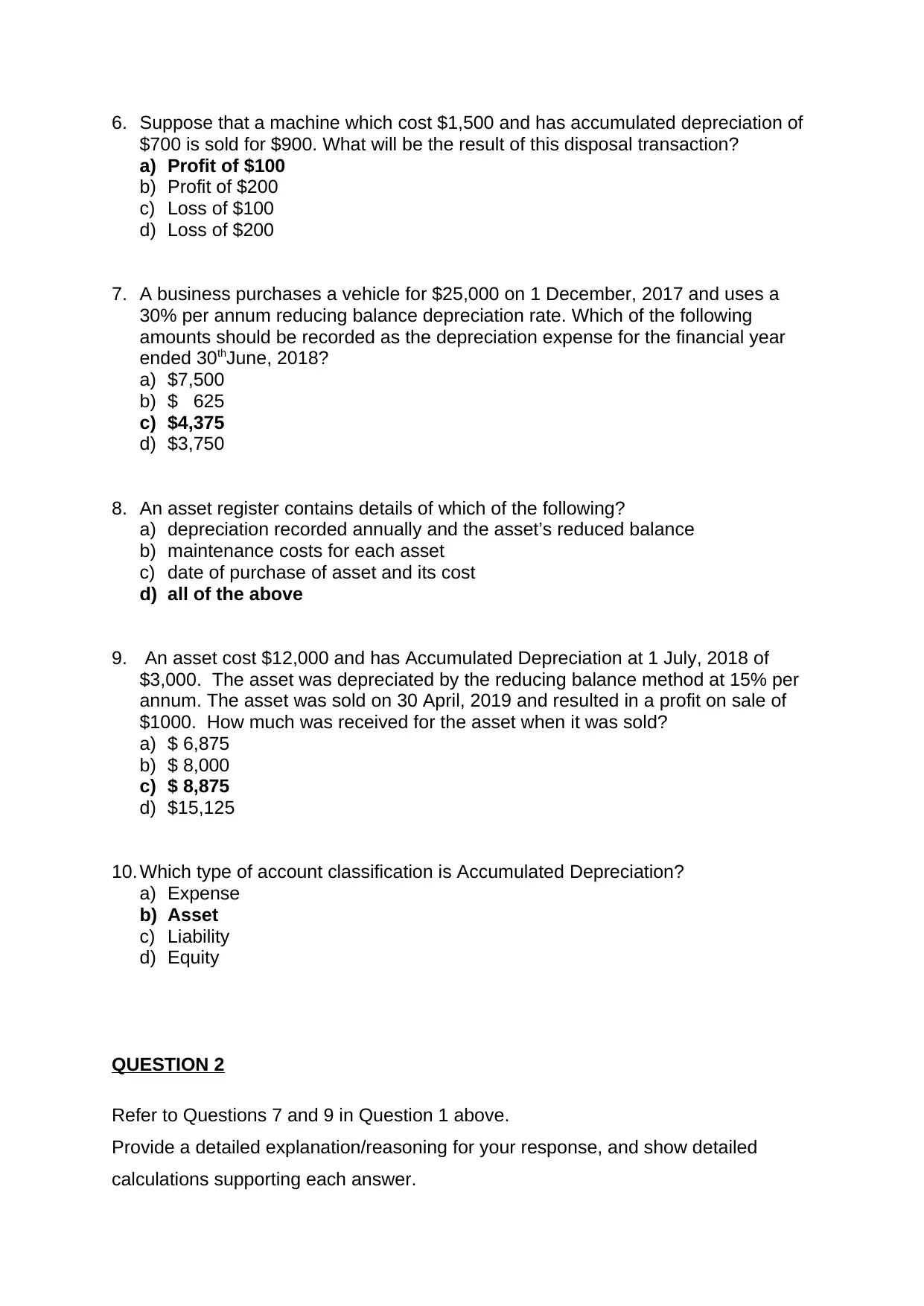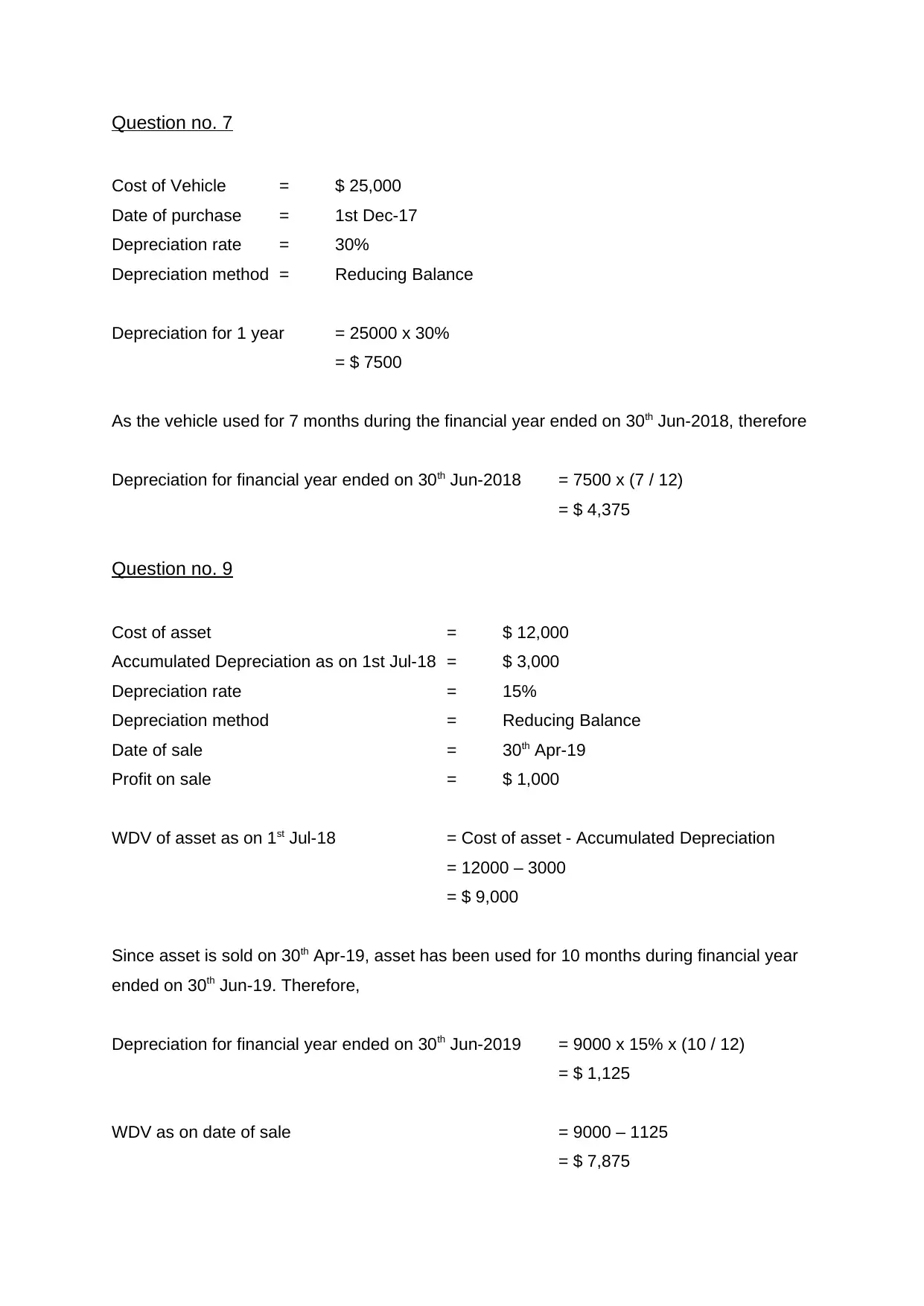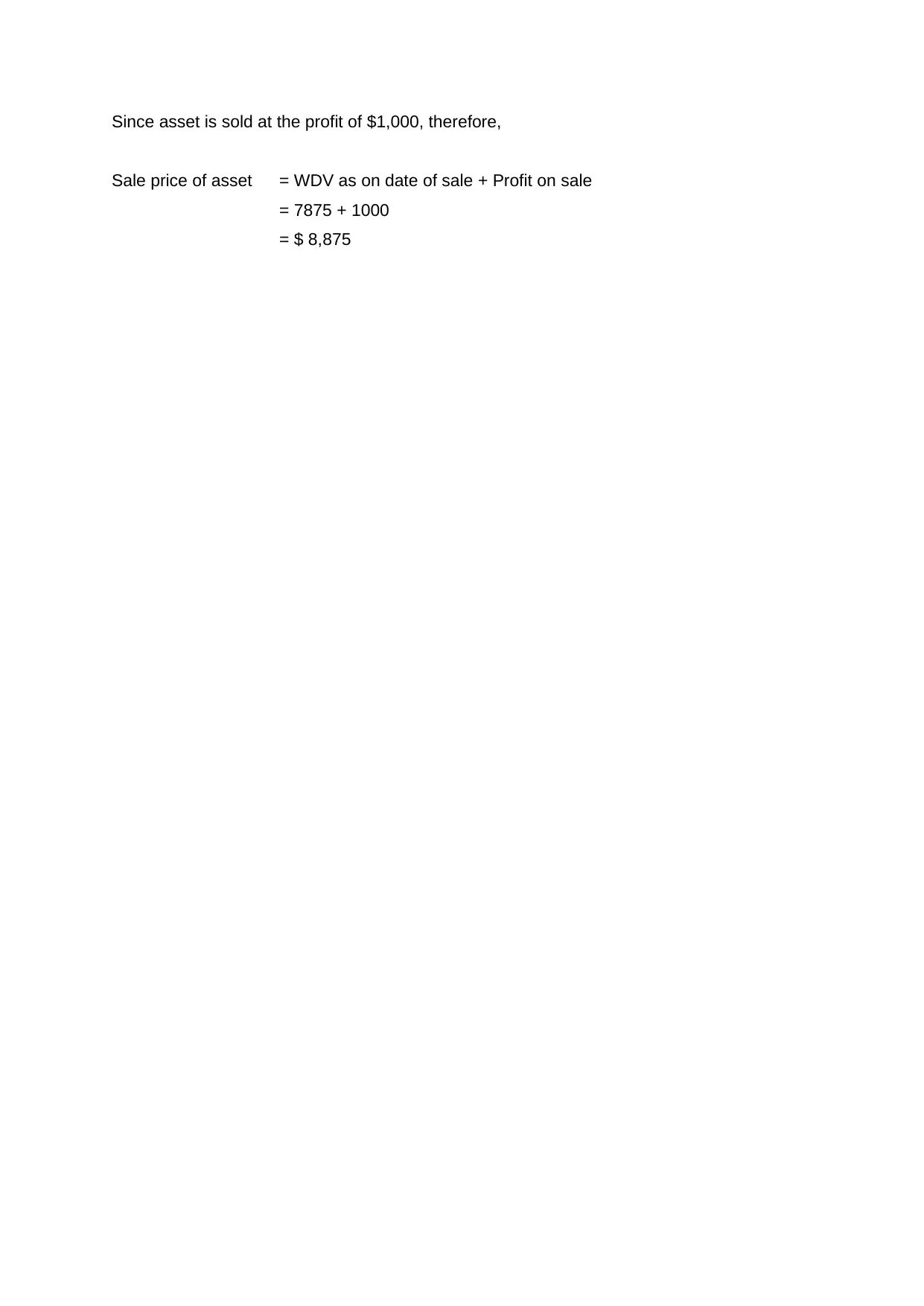BZ102 Accounting Principles Portfolio - Topic 9: Non-Current Assets
VerifiedAdded on 2021/04/19
|4
|714
|75
Homework Assignment
AI Summary
This homework assignment focuses on accounting principles related to non-current assets, covering topics such as asset cost, depreciation methods (straight-line and reducing balance), accumulated depreciation, journal entries, asset disposal, and asset registers. The assignment includes multiple-choice questions and detailed explanations with calculations for specific scenarios involving asset depreciation and disposal, providing step-by-step solutions for understanding the concepts. The solutions cover depreciation calculations for vehicles and assets sold at a profit, demonstrating how to determine depreciation expense and the impact of asset sales on financial statements. This assignment is a valuable resource for students studying accounting principles, providing practical examples and solutions to reinforce their understanding of non-current asset accounting.
1 out of 4











![[object Object]](/_next/static/media/star-bottom.7253800d.svg)